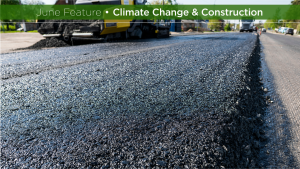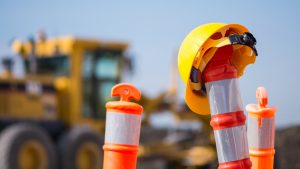Chief Patrick Michell of the Kanaka Bar community in British Columbia’s interior saw it coming: First the fires, then the rain.
The Daily Commercial News spoke to Patrick weeks before floods and landslides devastated large portions of the province. He explained his community had been preparing for the impact of climate change for nearly a decade and spoke openly about the climate change effects he sees as inevitable.
Patrick initiated a comprehensive resiliency plan for his community in the early 2000s that academics and professionals across Canada say needs to be replicated elsewhere. And although Kanaka Bar is tiny, its importance within the current climate change discussion has become outsized after gaining national prominence as the Clean50 organization’s Top Project of the Year for 2022.
Patrick’s perspective on the past makes his outlook on the future particularly poignant.
“Our ancestors managed land and resources for 8,000 years based on principles of sustainability and resilience. We’ve been doing climate change transition and adoption at Kanaka Bar for years. What’s the expression? ‘Hope the best, prepare for the worst.’”
While global leaders pledge to limit the planet’s temperature increase by a further 1.5 C by 2050, action is demanded now. Building design must move beyond just the reduction of GHG emissions from operations and building processes. It must address the very nature of resiliency over time, says Robin Cox, director of the Resilience By Design Lab and AdaptatIon Learning Network at Royal Roads University in Victoria.
“We need to start building buildings with the known climate risk projections in mind and consider how to adapt designs so that they support resilience in the face of these risks.”
Cox believes British Columbia will be visibly changed by the challenges posed by cycles of extreme heat, rainstorms and extended smoke seasons. Therefore, it’s vital that buildings now being planned fully to consider their 50-year lifespan. Incorporating resiliency features into a building’s design before a disaster is better than attempting to mitigate the impacts afterwards.
Robert Bernhardt, founder of Passive House Canada, and now a liaison between the construction industry and government, agrees building design must confront the effects of extreme weather events.
“Those design requirements exist now,” he told the Daily Commercial News. He cites as examples areas identified as vulnerable to higher water levels in the future where basements and living quarters on the ground floor are not permitted.
Canada can also look to New Orleans and New York City for lessons on protecting existing buildings and infrastructure. However, the larger issue of political reluctance and decisions concerning land use planning must also be addressed.
“We have to decide that we need resiliency,” says Bernhardt. “There are areas where we shouldn’t be building. That means appropriate land use decisions. For example, we currently allow people to put up a house basically wherever they want to.”
However, political will is required.
“Frankly, government is afraid because of the possible political blowback.”
He identifies other potential backlash coming from organized groups within the fossil fuel industry and certain building organizations reluctant to change. He points to the protracted delays with the 2020 National Building Code as an example.
Central Canada has yet to experience climatic events on the scale seen on the West and East coasts recently, allowing those middle provinces to avoid prioritizing mitigation and resiliency action plans. In the meantime, announcing new high-speed commuter highways plays better politically than allocating billions to protect vulnerable areas from fires and floods that have not yet happened.
Political pressure is growing in B.C. to make the changes necessary, says Bernhardt. The cost of doing nothing is billions of dollars in economic damage.
“Many parts of the construction industry are ready to roll. Over 200 NGO groups representing over one million British Columbians have written to the provincial government demanding action. Given that only 1.8 million British Columbians voted in the last election, that size of group matters.”
John Bleasby is a Coldwater, Ont.-based freelance writer. Send comments and Climate and Construction column ideas to editor@dailycommercialnews.com.










Recent Comments